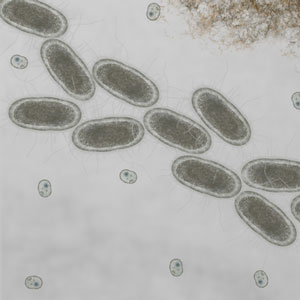International workshop recommends further E.coli research
- Like
- Digg
- Del
- Tumblr
- VKontakte
- Buffer
- Love This
- Odnoklassniki
- Meneame
- Blogger
- Amazon
- Yahoo Mail
- Gmail
- AOL
- Newsvine
- HackerNews
- Evernote
- MySpace
- Mail.ru
- Viadeo
- Line
- Comments
- Yummly
- SMS
- Viber
- Telegram
- Subscribe
- Skype
- Facebook Messenger
- Kakao
- LiveJournal
- Yammer
- Edgar
- Fintel
- Mix
- Instapaper
- Copy Link
Posted: 29 August 2012 | Food Standards Agency (FSA) | No comments yet
The FSA has published a report identifying key knowledge gaps and recommending areas for future research on EHEC…


Preliminary bacteriological tests found the E.coli strain O104:H4 to be present in two of the cases
The FSA in Scotland has published a report identifying key knowledge gaps and recommending areas for future research on enterohaemorrhagic Escherichia coli (EHEC). The workshop helped to improve knowledge and develop strategies for tackling this group of pathogens at source – with the ultimate aim of reducing the health impact on humans.
Controlling the spread of this type of E.coli is a priority for the FSA. Experts from around the globe attended a workshop in Midlothian, where priorities were agreed for research to help tackle EHEC at the main source of infection, the cattle gut. Delegates shared knowledge on the factors leading to the transmission and maintenance of infection in cattle, particularly the role of ‘supershedders’ – cattle that excrete particularly high levels of E.coli O157 in their faeces.
Supershedders are thought to play an important role in the spread of the bacteria to other cattle and the likelihood of transmission to humans via the environment or raw food. There was also discussion on intervention strategies being explored in other countries to reduce EHEC shedding by cattle and the feasibility of introducing these in the UK.
The key recommendations in the report include:
- improve understanding of the epidemiology of EHEC infection in cattle, humans and environmental reservoirs
- the need for more studies on the biology of host-bacteria interactions and the relationships between cattle, the environment and human infection rates
- support further research on potential intervention strategies and how effective they need to be to have an impact on human health
- promote international collaboration to investigate how sequence based typing schemes can be used to investigate the evolution and virulence of strains
- improve engagement between the industry, regulators and consumers to enhance understanding of the cost/benefit of intervention strategies as well as motivators and barriers to their implementation
The workshop was hosted by the FSA in Scotland in conjunction with the Knowledge Transfer Network Biosciences and the University of Edinburgh. It was held in response to a recommendation resulting from the public inquiry into the foodborne outbreak of E.coli O157 in South Wales in 2005. The inquiry’s report recommended that ‘The feasibility of identifying “supershedder” cattle on farms should be explored as a potential means of reducing the likelihood of spreading E.coli O157 to other cattle.’
Science behind the story
Enterohaemorrhagic E.coli (EHEC) are a group of E.coli that include verocytotoxin-producing serotypes including E.coli O157, O26 and O104. These can cause mild to severe illness, characterised by abdominal cramps, vomiting and bloody diarrhoea. EHEC infections can also lead to the serious conditions haemolytic uraemic syndrome and thrombotic thrombocytopaenic purpura. These conditions affect the blood, kidneys and, in severe cases, the central nervous system, and can even lead to death.
In the UK, EHEC infections are most commonly attributed to E.coli O157, for which there were over 1,000 cases reported in 2010. The main source for EHEC is the gut of ruminant animals, particularly cattle, which excrete or shed the bacteria in their faeces. Some cattle excrete EHEC at significantly higher levels than other animals in the herd, a phenomenon known as ‘supershedding’. Humans can become infected through direct exposure to faeces in the environment or when faecal contamination enters the water supply or food chain.
For further information on this area of research, an FSA review can be found below.
Related Items
International E.coli workshop(pdf 395KB)
Review of past and current research on VTEC in relation to public health protection (B11010)







